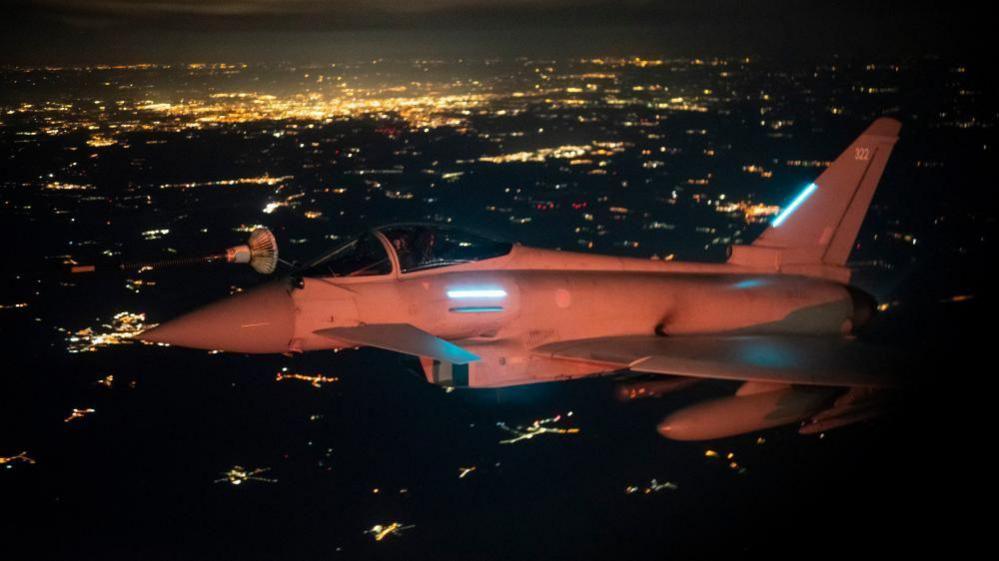Inside the radar hub protecting UK skies
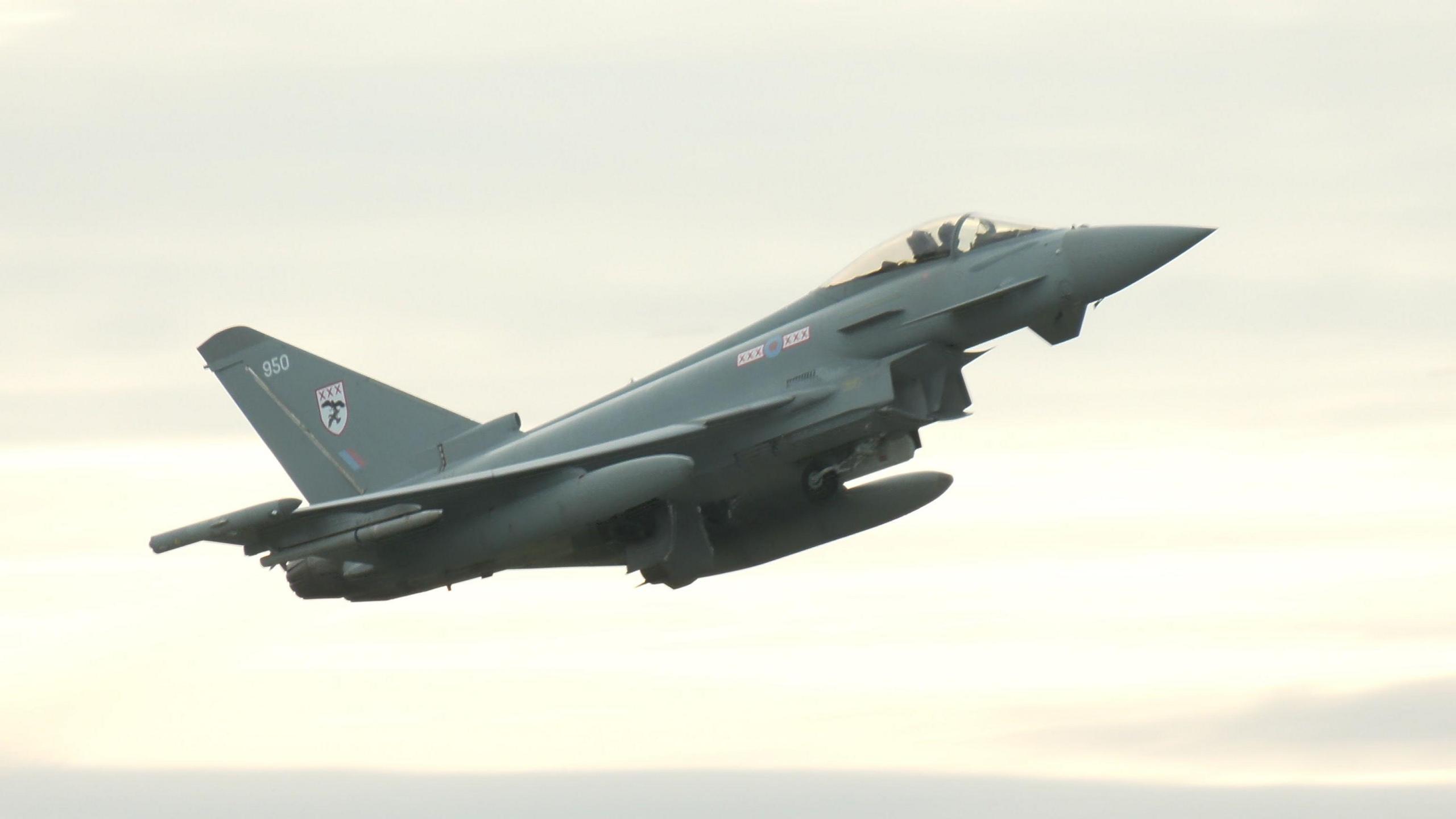
A Typhoon takes off under the watchful gaze of air traffic controllers
- Published
At the heart of Lincolnshire's military airspace, a team of air traffic controllers at RAF Coningsby is quietly orchestrating thousands of aircraft movements each month from fast jets on training sorties to the famous Red Arrows preparing for displays.
Flying Officer David Thompson is one of the controllers based at the Lincolnshire Terminal Air Traffic Control Centre (TATCC) - a radar hub that coordinates movements at four key RAF stations: Coningsby, Cranwell, Waddington and Barkston Heath.
"We manage the flow of aircraft in and out of Lincolnshire airfields to deliver operational output; whether that's flight training, displays, or Quick Reaction Alerts," explains Flying Officer Thompson, 46.
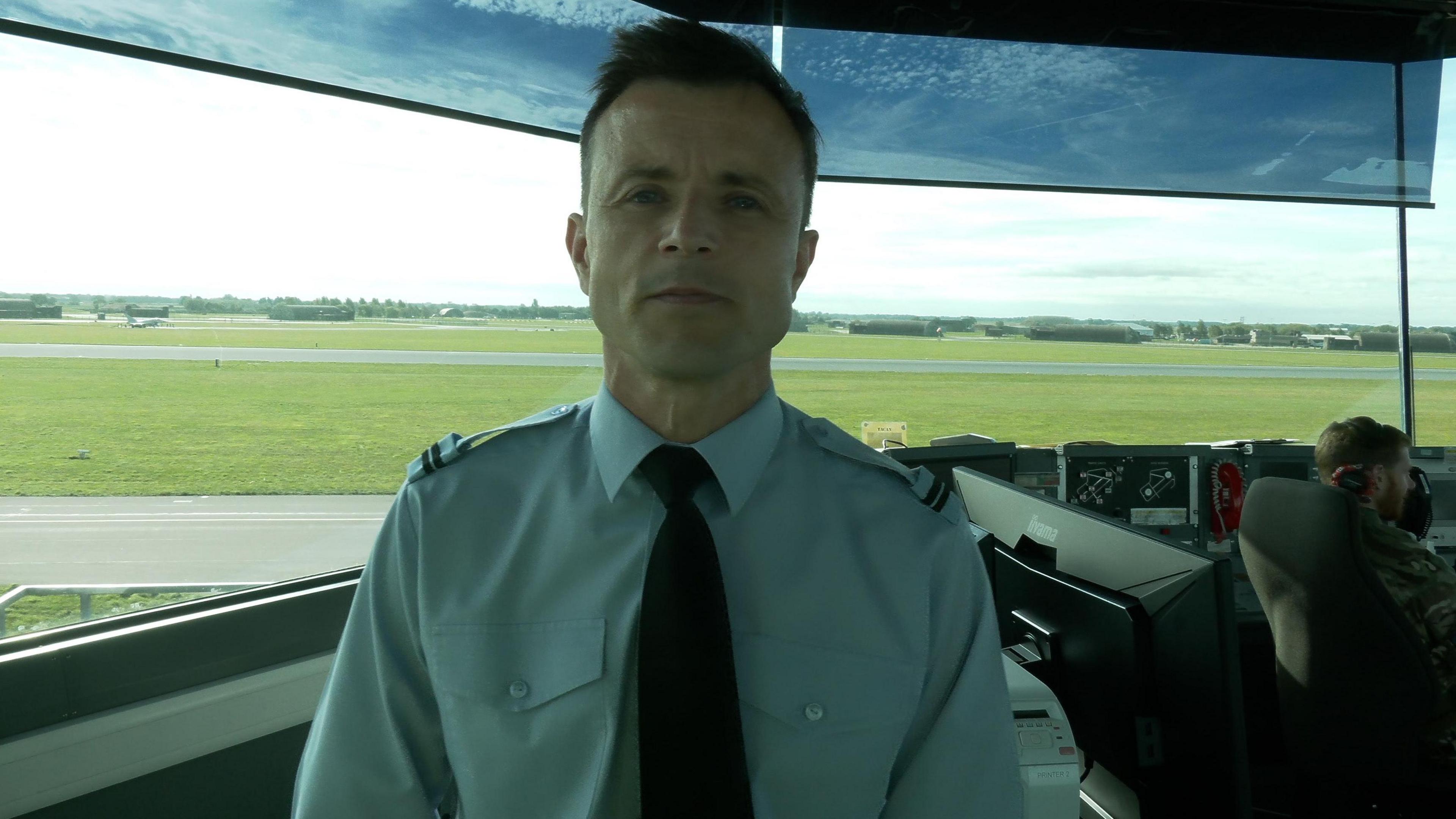
Flying Officer David Thompson is one of the controllers at RAF Coningsby
In 2024, the centre handled more than 60,000 aircraft movements - an average of more than 150 a day.
"It gets incredibly busy," says Flying Officer Thompson. "We have to manage controller workload carefully to ensure safety and effectiveness at all times."
The centre was established in April 2022 to centralise radar control across Lincolnshire.
While visual control rooms remain at each station, radar operations are now overseen from Coningsby, allowing for tighter coordination in one of the UK's most complex military airspaces.
"All four RAF stations are within 15 miles of each other," says Flying Officer Thompson. "It's vital that our team works together to give aircraft the space they need... whether it's for critical training or operational deployments."
That includes the UK's Quick Reaction Alert, external (QRA) capability, which remains on constant standby to intercept potential threats.
"There's a great sense of pride in knowing we help defend the nation," adds Flying Officer Thompson.
This new setup mirrors civilian models like the National Air Traffic Service at Swanwick in Hampshire, allowing radar, weather, and flight data to be transmitted and managed remotely, enhancing safety, flexibility, and operational resilience across one of the busiest military airspaces in the country.
But there is also a lighter side to the job.
"We host a family day every couple of years where people can see the Red Arrows or the Battle of Britain Memorial Flight. It's a real morale boost," says Flying Officer Thompson.
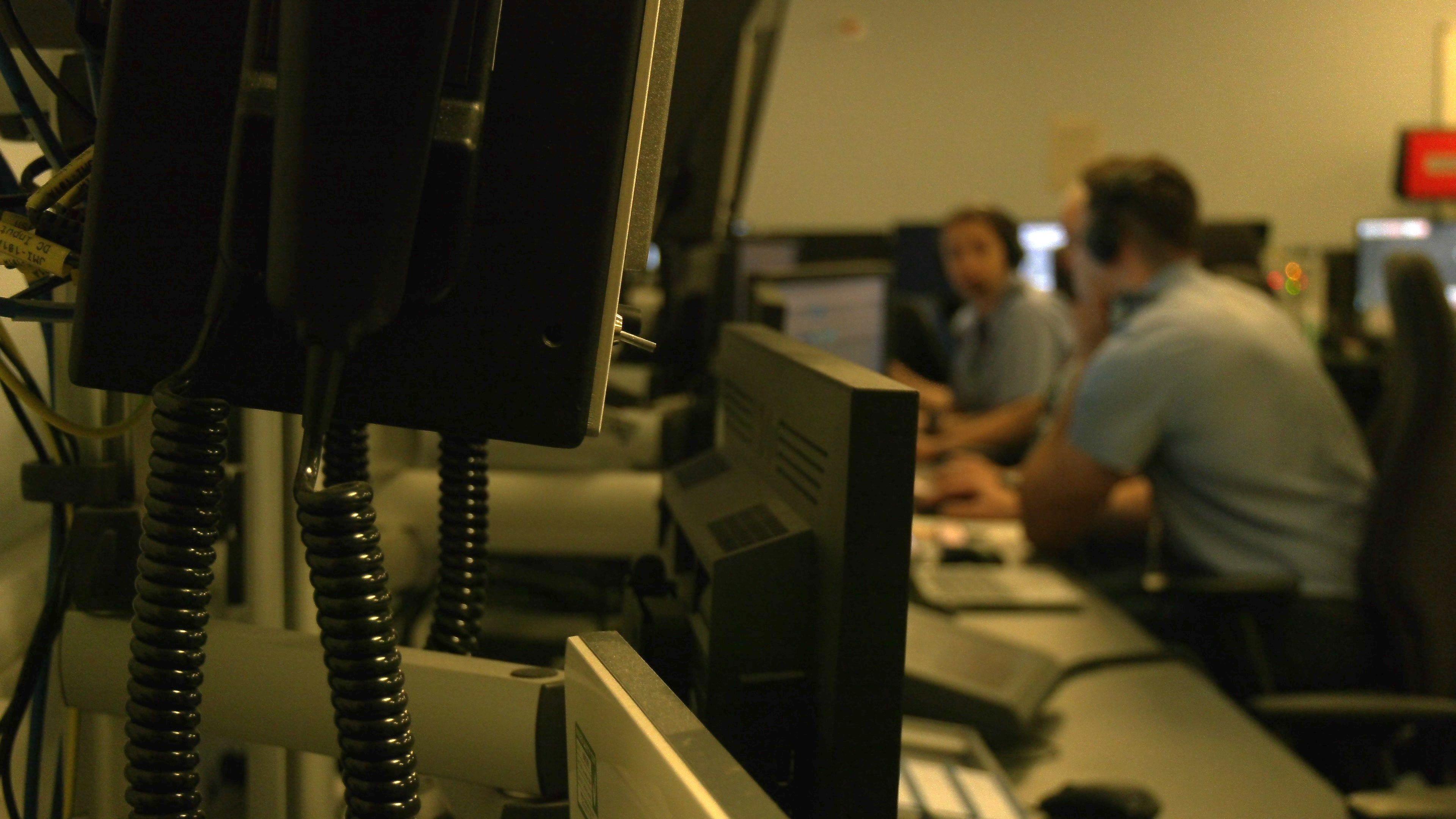
Coningsby's control room is "a military first in air traffic management", according to the RAF
Downstairs in the radar control room, rows of screens track aircraft across the region.
Controllers monitor training schedules, coordinate movements between bases, and ensure both military and civilian aircraft remain safely separated.
"Flight safety is our top priority," says Flying Officer Thompson. "We work closely with drone users too. If they're flying near our restricted zones, we ask them to contact us so we can help them operate safely."
Holidaymakers' drones endangering planes, RAF says
As tensions rise in Eastern Europe, including NATO deployments to Poland, the pressure on UK airspace operations continues.
"We have to maintain laser focus," says Flying Officer Thompson. "Our professional capability must always be ready."
The TATCC may be relatively new, but its impact is already clear. By bringing radar control under one roof, the RAF believes it has streamlined operations and strengthened its ability to respond to threats both at home and abroad.
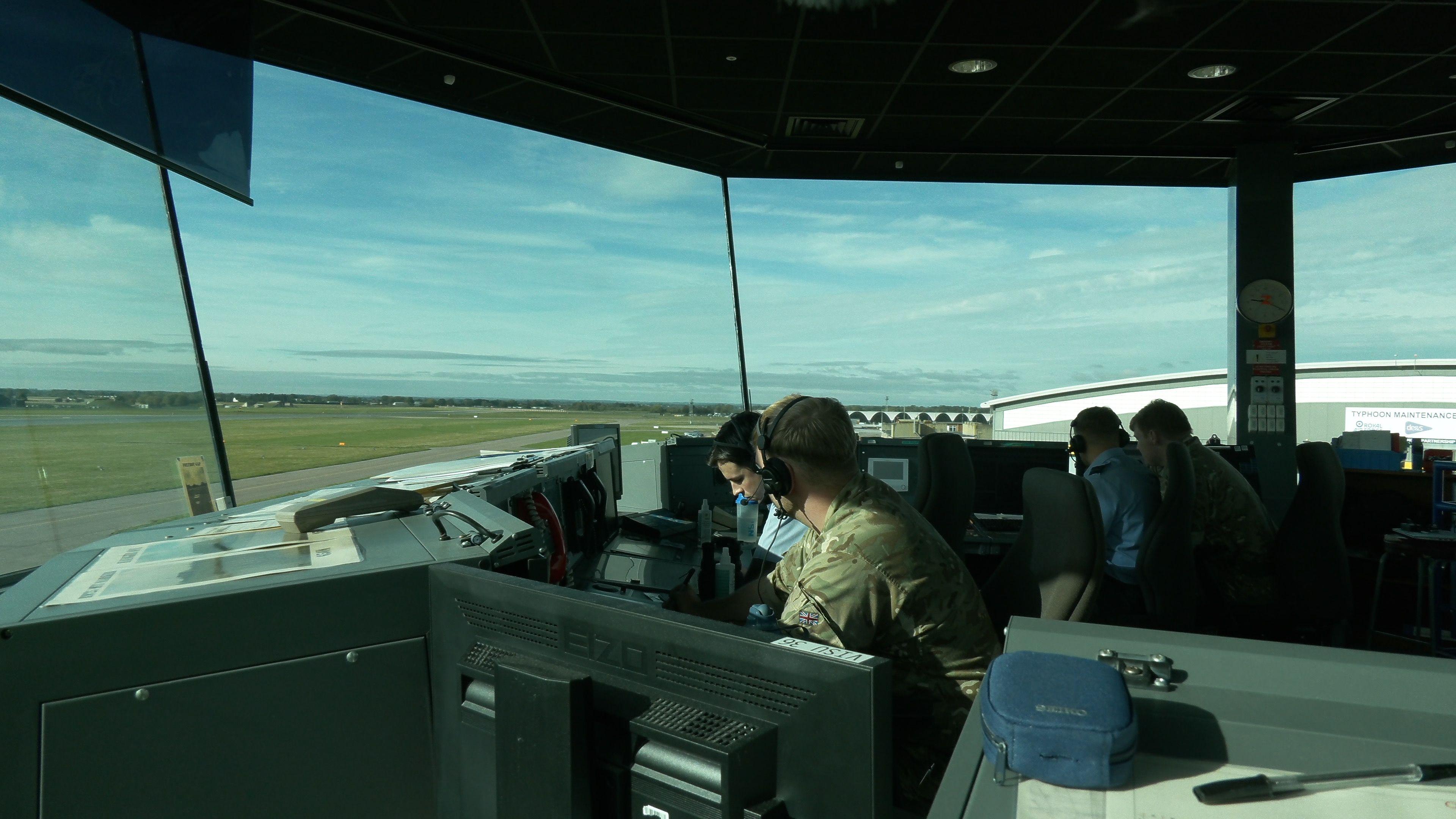
The view from RAF Coningsby's air traffic control tower
Listen to highlights from Lincolnshire on BBC Sounds, watch the latest episode of Look North or tell us about a story you think we should be covering here, external.
Download the BBC News app from the App Store, external for iPhone and iPad or Google Play, external for Android devices
- Published2 October
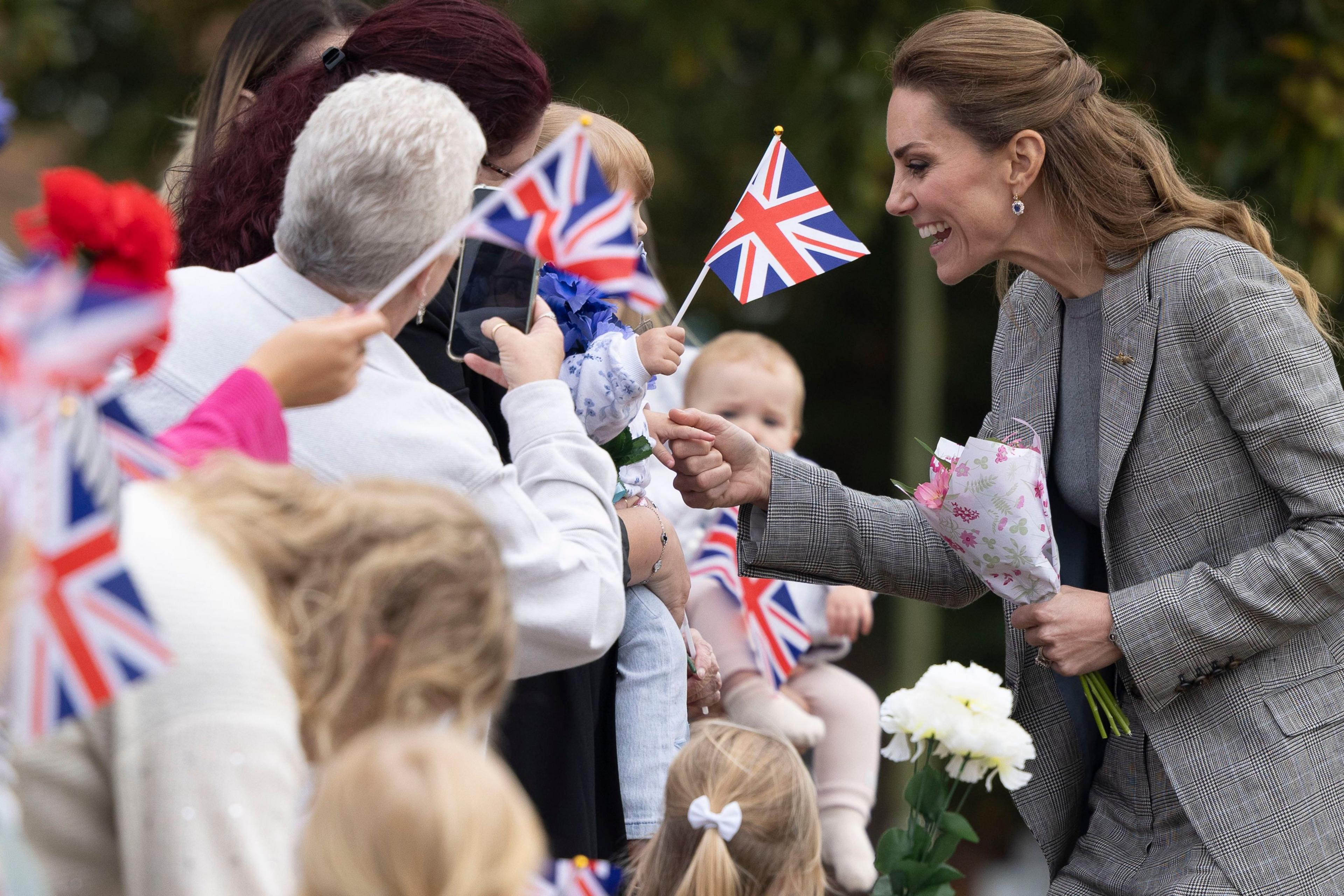
- Published20 September
